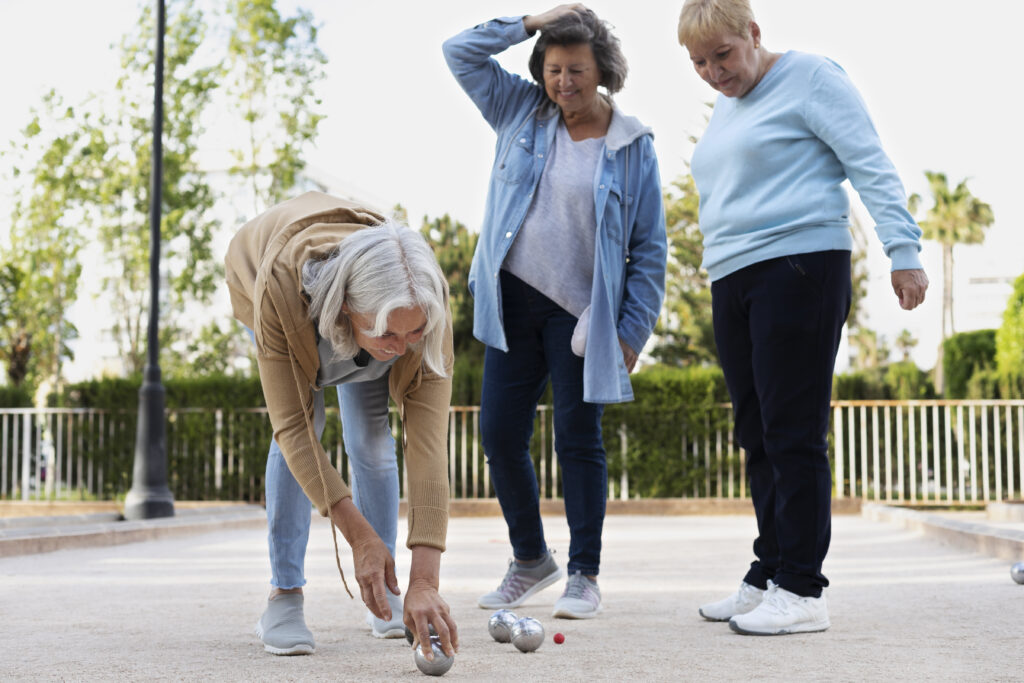
Have you ever noticed that simple movements you once took for granted, like bending down to tie your shoes or reaching for something on a high shelf, are becoming a little harder? Or perhaps you feel a persistent stiffness that wasn’t there before? This isn’t just getting old; it’s often the subtle progression of mobility loss with age.
We understand that declining mobility can be frustrating and even frightening. But here’s the crucial truth: this decline is rarely inevitable. By understanding the 4 stages of losing mobility and taking proactive steps, you can significantly slow, halt, or even regain movement after 40, leading to greater functional longevity.
Let’s break down how mobility typically declines and, more importantly, what simple steps you can take at each stage to reverse the trend.
Stage 1: Stiffness & Reduced Range of Motion
This is often the earliest and most subtle sign. You might feel a little creaky in the mornings, or notice that certain movements feel restricted. There’s no significant pain yet, but things just don’t move as freely as they used to.
What’s Happening: Connective tissues, like fascia and joint capsules, are becoming less pliable, and habitual inactivity is causing muscles to shorten.
The Problem: While seemingly minor, this stage sets the foundation for future issues. It limits your ability to perform movements fully, putting more strain on adjacent joints or compensatory muscles.
How to Reverse It:
Gentle Daily Movement: Don’t wait for pain to start moving! Incorporate gentle, full-range-of-motion movements every day. Think mobility exercises like ankles, wrists, shoulders rotations, gentle arm circles, and leg swings.
Consistent Stretching: Focus on dynamic stretches before activity and gentle static stretches after, or at the end of the day. Hold stretches for 20-30 seconds.
Hydration: Staying well-hydrated keeps all your tissues, including those around your joints, more pliable.
Stage 2: Minor Aches & Pains with Movement
At this stage, the stiffness might be accompanied by occasional aches or discomfort, particularly when you try to move through a restricted range or after prolonged inactivity. You might feel a catch in your knee, a twinge in your hip, or general stiffness after sitting too long.
What’s Happening: The lack of full movement is now creating imbalances and possibly irritating joint surfaces or surrounding soft tissues. Your body is sending a warning signal.
The Problem: People often start avoiding movements that cause this mild discomfort, inadvertently leading to further stiffness and weakness, a vicious cycle.
How to Reverse It:
Continue Stage 1 Strategies: These remain fundamental.
Targeted Mobility Drills: Work on specific mobility drills for your problem areas. For instance, if your hips ache, focus on hip circles, glute stretches, and figure-4 stretches.
Strength Training: Weak muscles can lead to joint instability and pain. Begin incorporating gentle strength exercises to support the joints.
Posture Awareness: Incorrect posture significantly contributes to joint strain. Actively work on improving your sitting, standing, and even sleeping posture.
Stage 3: Significant Pain & Fear of Movement
This is where mobility loss becomes a major life impact. Pain is more frequent and noticeable, possibly even at rest. The fear of exacerbating pain often leads to significant reductions in activity, leading to further physical decline. You might stop doing hobbies you love or struggle with daily tasks.
What’s Happening: Prolonged disuse and misalignment have caused more significant joint wear, muscle atrophy, and potential inflammation. The brain also becomes sensitized to pain, leading to a fear-avoidance cycle.
The Problem: This stage can severely impact independence and quality of life. Fear is as powerful as the physical limitations.
How to Reverse It:
Professional Guidance is Crucial: At this stage, working with a personal trainer specializing in healthy aging or a physical therapist is highly recommended. They can identify specific limitations and create a safe, progressive plan.
Prioritize Gentle, Consistent Movement: Even when it hurts, controlled movement is often part of the solution, not the problem. Focus on non-weight-bearing exercises, like swimming or cycling, initially if needed, and gradually progress.
Pain Management Techniques: Incorporate natural remedies for joint pain like heat/cold therapy, anti-inflammatory foods, and stress reduction.
Balance Training: As mobility declines, fall risk increases. Dedicated balance exercises are critical here.
Mindset Shift: Challenge the fear. Understand that movement, when done correctly, is restorative.
Stage 4: Severe Functional Limitation & Dependence
At this most advanced stage, an individual might rely on assistive devices, like walkers, canes, or require significant help with daily activities. Simple movements are extremely difficult or impossible without assistance.
What’s Happening: Years of neglect have led to severe muscle weakness, significant joint degeneration, and potentially chronic conditions exacerbated by inactivity.
The Problem: Independence is severely compromised, and quality of life is significantly impacted.
How to Reverse It:
Never Too Late: While more challenging, even at this stage, improvements are possible. The goal shifts from full recovery to maximizing remaining function and improving comfort.
Specialized Programs: Working with a highly experienced personal trainer or physical therapist is essential. Programs will be highly individualized, focusing on basic strength, chair-based exercises, and assisted mobility.
Focus on Small Wins: Celebrate every small improvement in range of motion, strength, or comfort.
Sarcopenia Prevention/Reversal: Targeted strength training for longevity can still help rebuild some muscle mass and improve overall strength, even if starting from a very low baseline.
How to Improve Mobility and Regain Movement After 40: Take Action Now!
Understanding these stages isn’t meant to cause alarm, but to empower you. The earlier you address declining mobility, the easier it is to reverse. By embracing consistent mobility exercises, mindful posture, and strategic strength training, you can effectively regain movement after 40 and ensure your later years are filled with independence and vitality.
Don’t wait for the stiffness to turn into pain, or for pain to turn into significant limitation. Take proactive steps now to ensure your body continues to move freely, keeping you active and engaged in the life you love.
